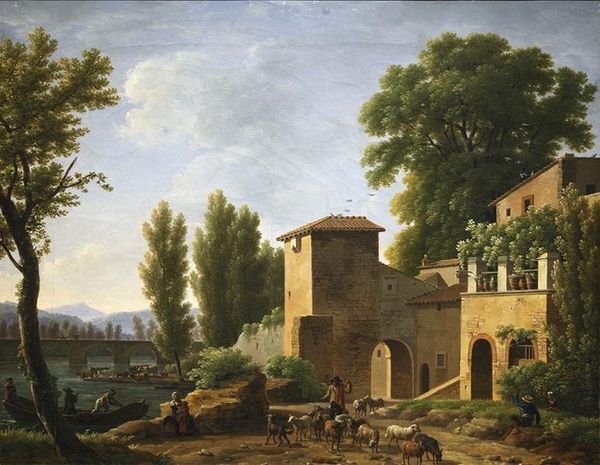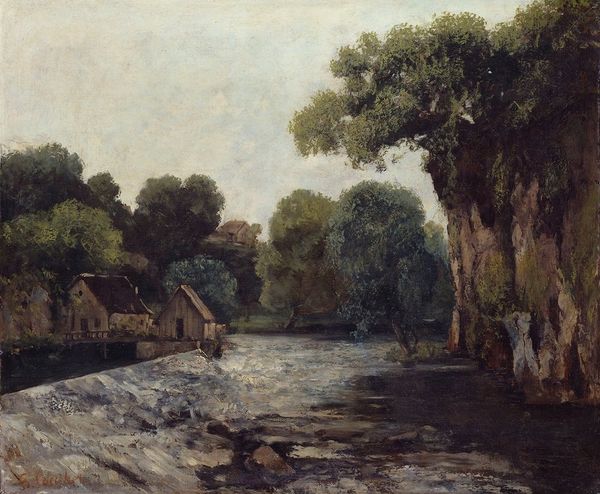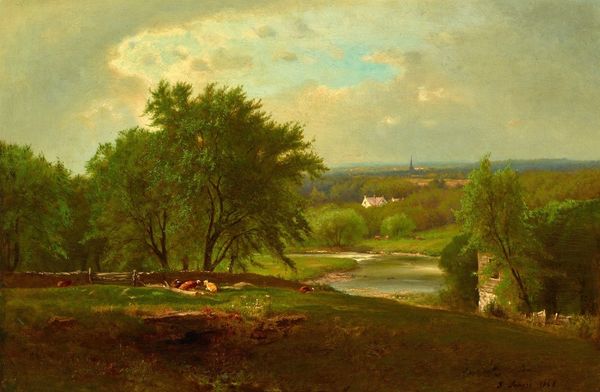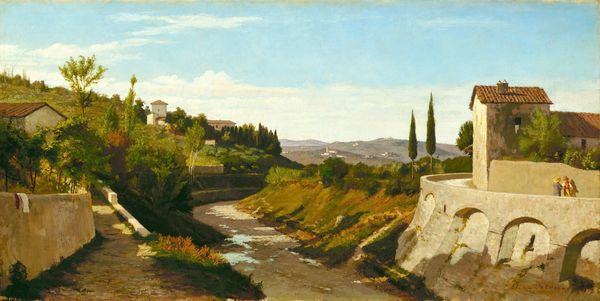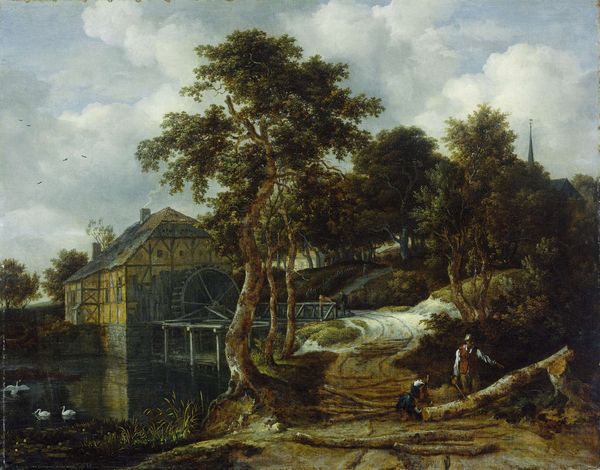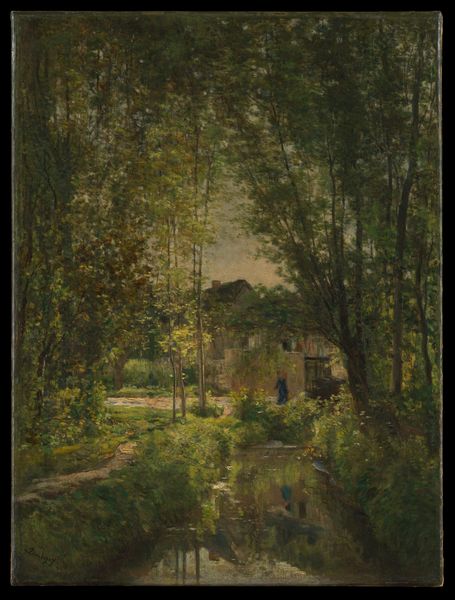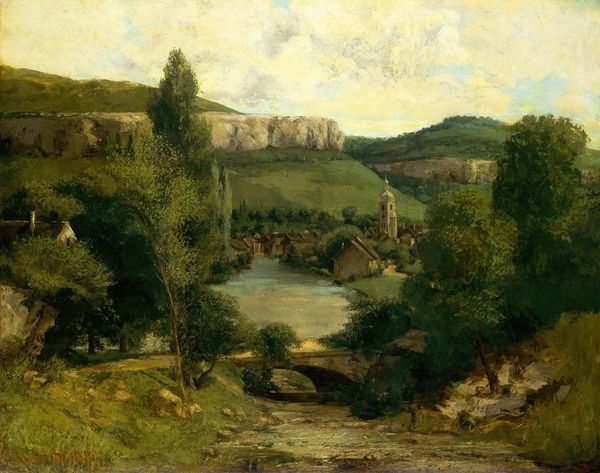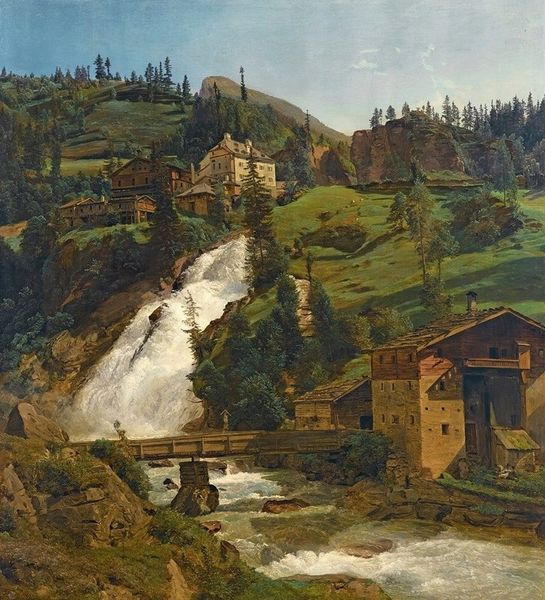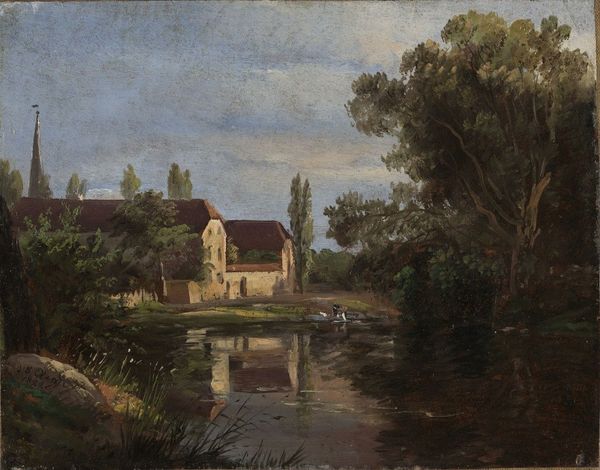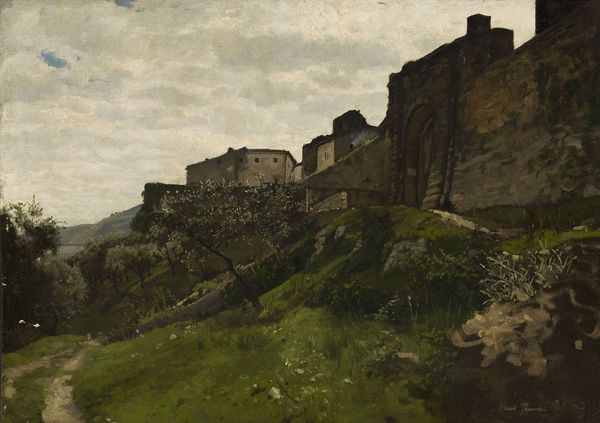
painting, oil-paint
#
painting
#
oil-paint
#
landscape
#
oil painting
#
romanticism
#
realism
Dimensions: 30 x 38 cm
Copyright: Public domain
Théodore Rousseau painted this evocative oil on canvas, entitled 'Mills of Thiers', sometime in the mid-19th century. It depicts an industrial landscape in the Auvergne region of France. The scene reflects the growing interest in landscape painting that was emerging at this time. But it wasn't only about pretty views: during the 1830s, Rousseau and other artists began to turn away from the official state-sponsored Salons, exhibiting their art independently. This was in part a reaction to the growing industrialization of France. The image creates meaning through visual codes, cultural references, and historical associations. We need to consider the artist's rejection of academic conventions as a form of social commentary. Rousseau was a key figure in the Barbizon School of painting, which expressed a desire for a simpler, more authentic way of life. By researching exhibition records, letters, and critical reviews from the period, we gain a deeper understanding of the context in which this painting was produced and displayed. It demonstrates how the meaning of art is always contingent on its social and institutional context.
Comments
No comments
Be the first to comment and join the conversation on the ultimate creative platform.

